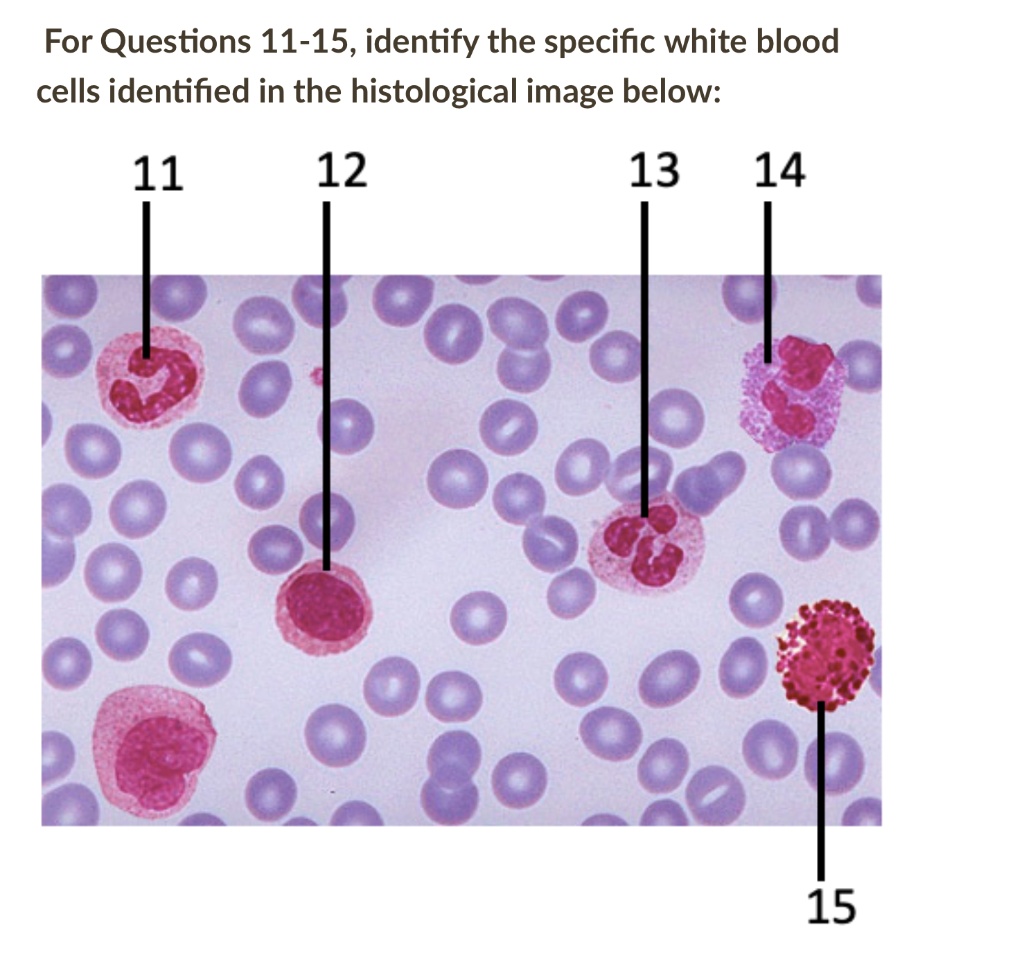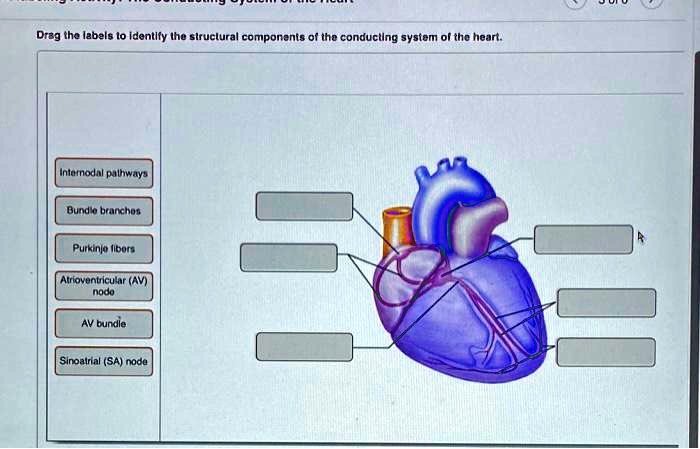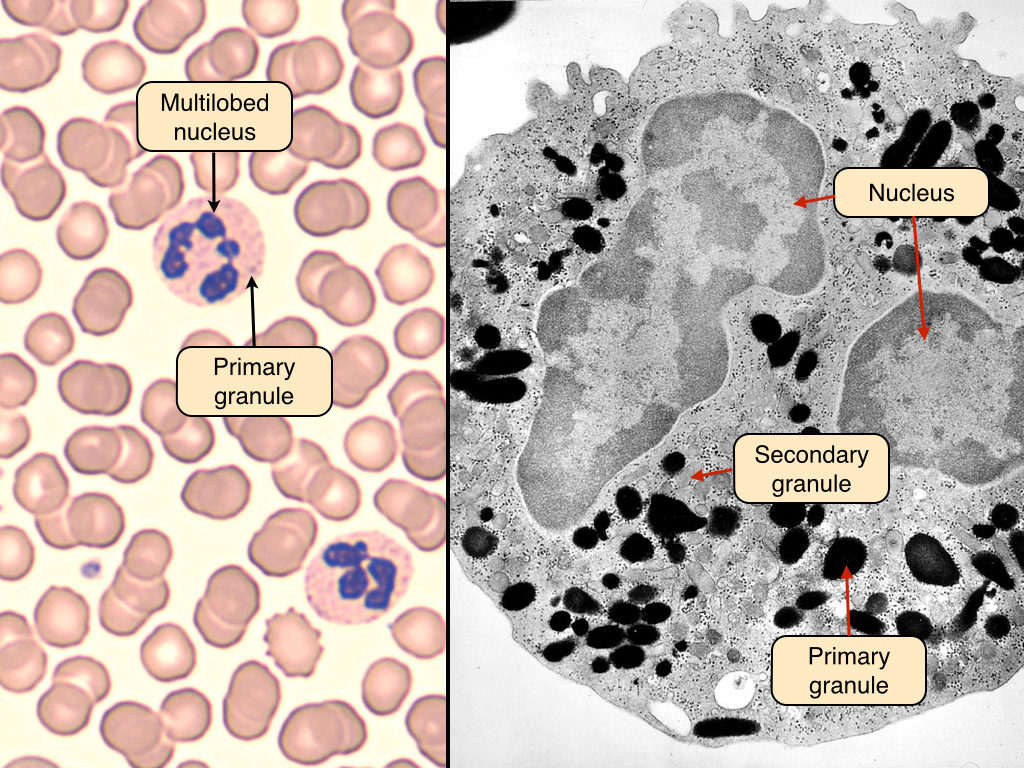The leukocyte, commonly known as a white blood cell (WBC), is a major component of the body’s defenses against disease.Leukocytes protect the body against invading microorganisms and body cells with mutated DNA, and they clean up debris. Platelets are essential for the repair of blood vessels when damage has occurred; they also provide growth factors for healing and repair.
BIO169 Chapter 17 Flashcards | Quizlet
Study with Quizlet and memorize flashcards containing terms like Drag the labels to identify the constituent parts of blood., What binds to this structure on the hemoglobin molecule?, Which of the labels in the figure indicates a cell normally found in the circulating blood? and more. … Drag the labels to identify white blood cells

Source Image: numerade.com
Download Image
Jul 19, 2023A. After placing a drop of blood on the first slide, hold a second slide at an angle in front of the drop. Pull back until the blood has wicked along the edge of the second slide by capillary action. B. Push the second slide forward as smoothly as you can to the very end of the slide. C.

Source Image: numerade.com
Download Image
Chapter 22 Lymphatic/Immune Flashcards | Quizlet Nov 8, 20223.1. White Blood Cells. WBC are colorless cells of the human blood because they do not have any pigment. They comprise 7000 to 8000 cells in one cubic mm of blood . Their size is much larger than the red blood cells. They can be classified into five different types, based on the shape of the nucleus and the density of the granules in the cytoplasm.

Source Image: blog.valdosta.edu
Download Image
Drag The Labels To Identify White Blood Cells
Nov 8, 20223.1. White Blood Cells. WBC are colorless cells of the human blood because they do not have any pigment. They comprise 7000 to 8000 cells in one cubic mm of blood . Their size is much larger than the red blood cells. They can be classified into five different types, based on the shape of the nucleus and the density of the granules in the cytoplasm. Abstract. The characterization of white blood cells (WBCs) is crucial for blood analyses and disease diagnoses. However, current standard techniques rely on cell labeling, a process which imposes significant limitations. Here we present three-dimensional (3D) optical measurements and the label-free characterization of mouse WBCs using optical
Identification of Red & White Blood Cells
What is a normal white blood cell count? It is normal for you to produce nearly 100 billion white blood cells each day. After completing a blood draw, a test counts your white blood cells, which equals number of cells per microliter of blood. The normal white blood cell count ranges between 4,000 and 11,000 cells per microliter. Blood Lab

Source Image: medcell.org
Download Image
BIO169 Chapter 17 Flashcards | Quizlet What is a normal white blood cell count? It is normal for you to produce nearly 100 billion white blood cells each day. After completing a blood draw, a test counts your white blood cells, which equals number of cells per microliter of blood. The normal white blood cell count ranges between 4,000 and 11,000 cells per microliter.

Source Image: quizlet.com
Download Image
BIO169 Chapter 17 Flashcards | Quizlet The leukocyte, commonly known as a white blood cell (WBC), is a major component of the body’s defenses against disease.Leukocytes protect the body against invading microorganisms and body cells with mutated DNA, and they clean up debris. Platelets are essential for the repair of blood vessels when damage has occurred; they also provide growth factors for healing and repair.

Source Image: quizlet.com
Download Image
Chapter 22 Lymphatic/Immune Flashcards | Quizlet Jul 19, 2023A. After placing a drop of blood on the first slide, hold a second slide at an angle in front of the drop. Pull back until the blood has wicked along the edge of the second slide by capillary action. B. Push the second slide forward as smoothly as you can to the very end of the slide. C.

Source Image: quizlet.com
Download Image
Solved Complete the labeling activity by identifying the | Chegg.com Plasma is the main component of blood and consists mostly of water, with proteins, ions, nutrients, and wastes mixed in. Red blood cells are responsible for carrying oxygen and carbon dioxide. Platelets are responsible for blood clotting. White blood cells are part of the immune system and function in immune response.

Source Image: chegg.com
Download Image
Biosensors | Free Full-Text | High-Throughput, Label-Free Isolation of White Blood Cells from Whole Blood Using Parallel Spiral Microchannels with U-Shaped Cross-Section Nov 8, 20223.1. White Blood Cells. WBC are colorless cells of the human blood because they do not have any pigment. They comprise 7000 to 8000 cells in one cubic mm of blood . Their size is much larger than the red blood cells. They can be classified into five different types, based on the shape of the nucleus and the density of the granules in the cytoplasm.

Source Image: mdpi.com
Download Image
Label‐Free Identification of White Blood Cells Using Machine Learning – Nassar – 2019 – Cytometry Part A – Wiley Online Library Abstract. The characterization of white blood cells (WBCs) is crucial for blood analyses and disease diagnoses. However, current standard techniques rely on cell labeling, a process which imposes significant limitations. Here we present three-dimensional (3D) optical measurements and the label-free characterization of mouse WBCs using optical

Source Image: onlinelibrary.wiley.com
Download Image
BIO169 Chapter 17 Flashcards | Quizlet
Label‐Free Identification of White Blood Cells Using Machine Learning – Nassar – 2019 – Cytometry Part A – Wiley Online Library Study with Quizlet and memorize flashcards containing terms like Drag the labels to identify the constituent parts of blood., What binds to this structure on the hemoglobin molecule?, Which of the labels in the figure indicates a cell normally found in the circulating blood? and more. … Drag the labels to identify white blood cells
Chapter 22 Lymphatic/Immune Flashcards | Quizlet Biosensors | Free Full-Text | High-Throughput, Label-Free Isolation of White Blood Cells from Whole Blood Using Parallel Spiral Microchannels with U-Shaped Cross-Section Plasma is the main component of blood and consists mostly of water, with proteins, ions, nutrients, and wastes mixed in. Red blood cells are responsible for carrying oxygen and carbon dioxide. Platelets are responsible for blood clotting. White blood cells are part of the immune system and function in immune response.